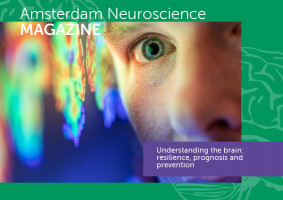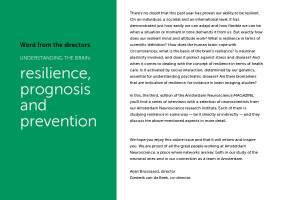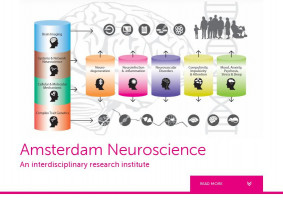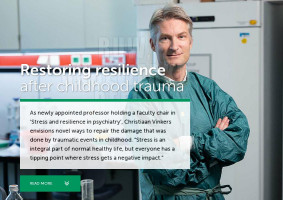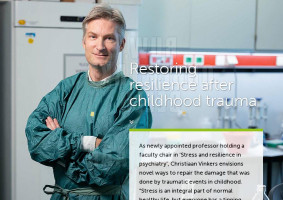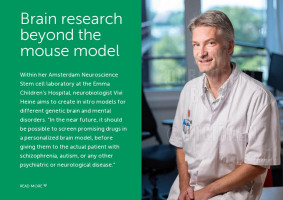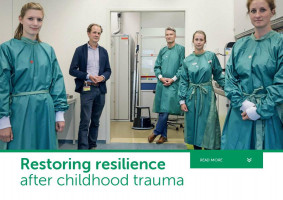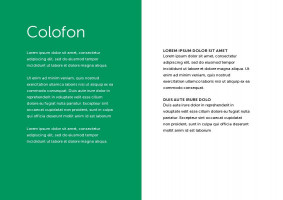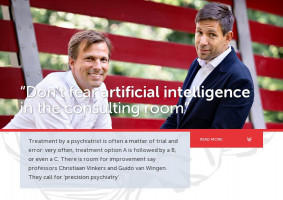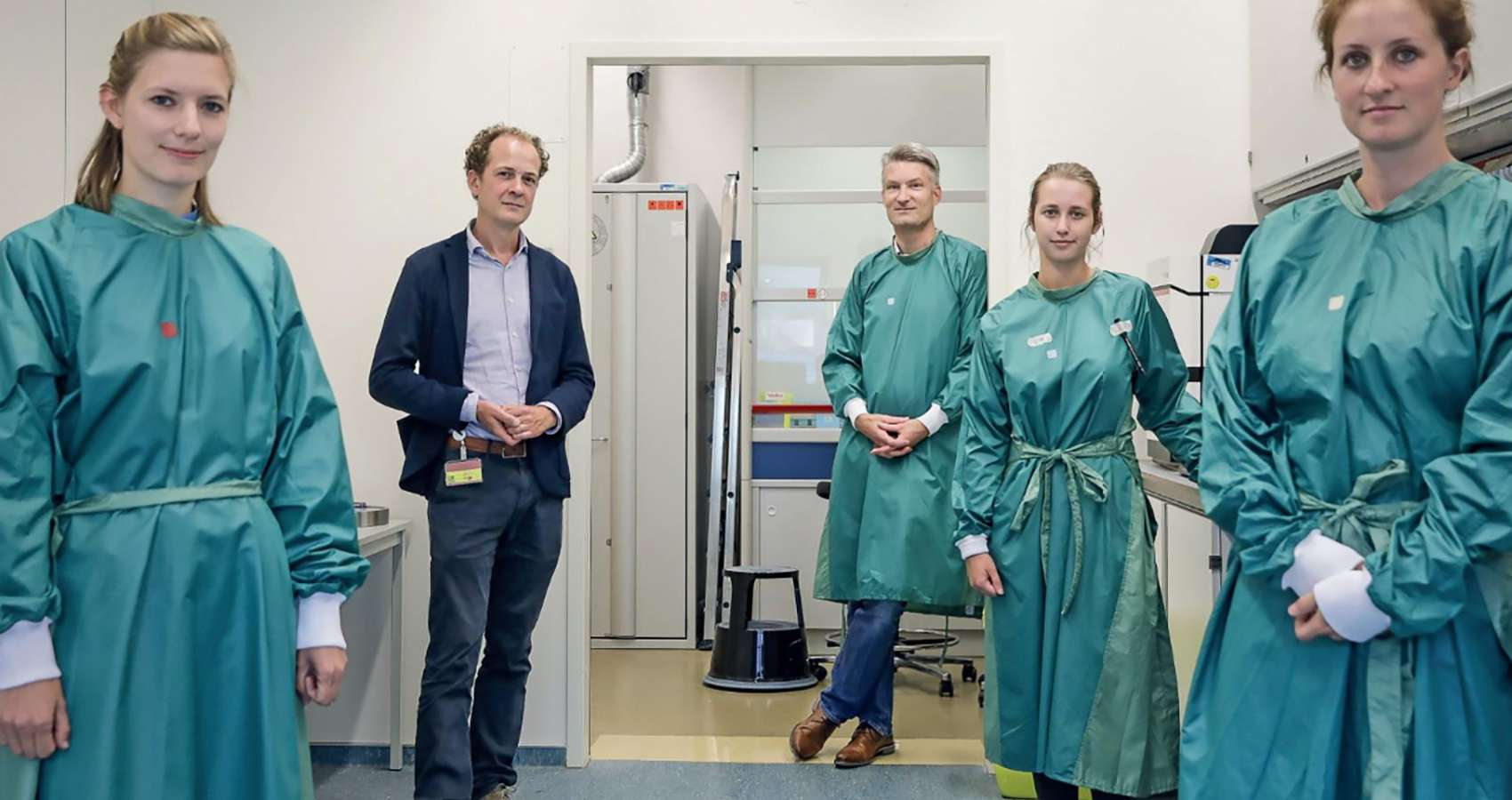
As newly appointed professor holding a faculty chair in ‘Stress and resilience in psychiatry’, Christiaan Vinkers envisions novel ways to repair the damage that was done by traumatic events in childhood. “Stress is an integral part of normal healthy life, but everyone has a tipping point where stress gets a negative impact.”
“There’s something strange about our approach to stress”, Christiaan Vinkers says. “It is a normal and integral part of our daily life. It keeps us aware of smaller and bigger threats; it keeps us ‘sharp’. Without a healthy bit of stress, we literally wouldn’t be able to live. Yet, we only talk about it as if stress itself is our biggest threat.” While many of us want to believe there is something like ‘The Ten Best Tips against Stress’ – “sheer nonsense” – Vinkers prefers to talk about stress as if it were a valuable, delicately balanced orchestra. “Our autonomous nervous system, the immune system, emotions, experiences, nature and nurture, they’re all essential players in our stress symphony. They contribute to a normal and adaptive response to stress. But that does not mean that the orchestra never plays out of tune”, he adds.
From abuse to neglect
One of the most efficient ways to mess up the score of the stress-orchestra, is childhood trauma. Vinkers: “In approximately 25% of all depressed patients we see a history of childhood trauma. This can be physical abuse, but also emotional neglect in childhood is a large cause of psychiatric as well as somatic diseases later in life.” With a 800 thousand euro VIDI-grant by the Dutch science council NWO, psychiatrist and neuroscientist Vinkers wants to find out how childhood trauma affects the normal functioning of the stress-system and, therefore, leads to depression and other psychological, as well as physical damage. “First, with our research group we want to find out which components of the stress system are affected by childhood trauma. Secondly, we need to look at childhood trauma-related depression in daily life. With a stress-test in the laboratory, we will try to disentangle the stress dynamics of these patients and thus try to find out where and how the dynamic regulation of stress becomes out of tune.
Psychology and biology
Vinkers and his team also want to examine whether either a pharmacological treatment or a psychological therapy may improve the performance of the normal ‘stress orchestra’: the so-called RESET-trials, funded by the Hersenstichting and Stichting Tot Steun. “Mifepristone is a medicine that blocks the glucocorticoid receptor in the brain. In preclinical settings this has proven to be a potentially valuable treatment to help repair the consequences of childhood trauma at adult age. Now is the time to examine this drug in a robust clinical trial.” In another therapeutic approach, Vinkers and his team want to see if psychotherapy can reset the brain to a healthy way of dealing with childhood trauma. “EMDR and Imaginary Rescripting have become very strong instruments in modern psychiatry, for patients with mental problems caused by traumatic events. I firmly believe that the therapeutic value of literally rescripting your memory has been underestimated so far. In our RESET-trials, we want to compare either this psychological approach or the biological approach through glucocorticoid receptor-blockers, with the regular approach of modern-day psychological care in childhood trauma.”
New chair
Apart from being awarded a prestigious VIDI-grant, Vinkers was recently also appointed as faculty chair ‘Stress and Resilience in Psychiatry’ at Amsterdam UMC. “Rooted in the Departments of Psychiatry and of Anatomy & Neurosciences, this is an enormous honour”, Vinkers admits. “The brain is one of the most intriguing organs. Stress, mental health, and the brain, it seems like everybody has an opinion about it. Nobody talks as passionately about their kidney or any other organ for that matter. We are fascinated by the brain. But stress and resilience are complex and dynamic phenomena and should not be oversimplified. Like the English philosopher Alfred Whitehead said more than a century ago: seek simplicity and then distrust it! This goes for research in the brain like no other field of research. How we respond to stress is a surprisingly dynamic process. Stress initiates a cascade of behavioral, (neuro)biological, and physiological changes. Even talking about it like an orchestra, doesn’t do full justice to the stress system. An integrated stress response is individual-specific, depending on biological and psychological factors, previous experiences, but also the context of an individual’s life.”

Christiaan Vinkers en Vivi Heine
Lorem ipsum dolor sit amet, consectetur adipiscing elit. Pellentesque pellentesque eu est imperdiet sollicitudin. Integer efficitur libero id eros varius, ac vehicula tellus rhoncus. Pellentesque sollicitudin semper nulla, vel ornare orci placerat et. Vestibulum varius turpis ut erat volutpat, ut finibus lacus accumsan. lorem ipsum dolor sit amet, consectetur adipiscing elit. Pellentesque pellentesque eu est imperdiet sollicitudin. Integer efficitur libero id eros varius, ac vehicula tellus rhoncus. Pellentesque sollicitudin semper nulla, vel ornare orci placerat et. Vestibulum varius turpis ut erat volutpat, ut finibus lacus accumsan
Transcending disciplines
Vinkers emphasizes that research into normal as well as unhealthy stress response, requires collaboration across various disciplines. “Stress research needs a translational and interdisciplinary approach, which is the backbone of Amsterdam Neuroscience, combining knowledge from fundamental brain research, immune processes, preclinical work, stress biology, advanced data analytics, but also clinical trials with patients. In my new position as faculty chair, I will seek those collaborations to go into unpaved territory. Amsterdam is a perfect environment to do that, and I am very much looking forward it.”
More info: jeugdtrauma-depressie.nl


